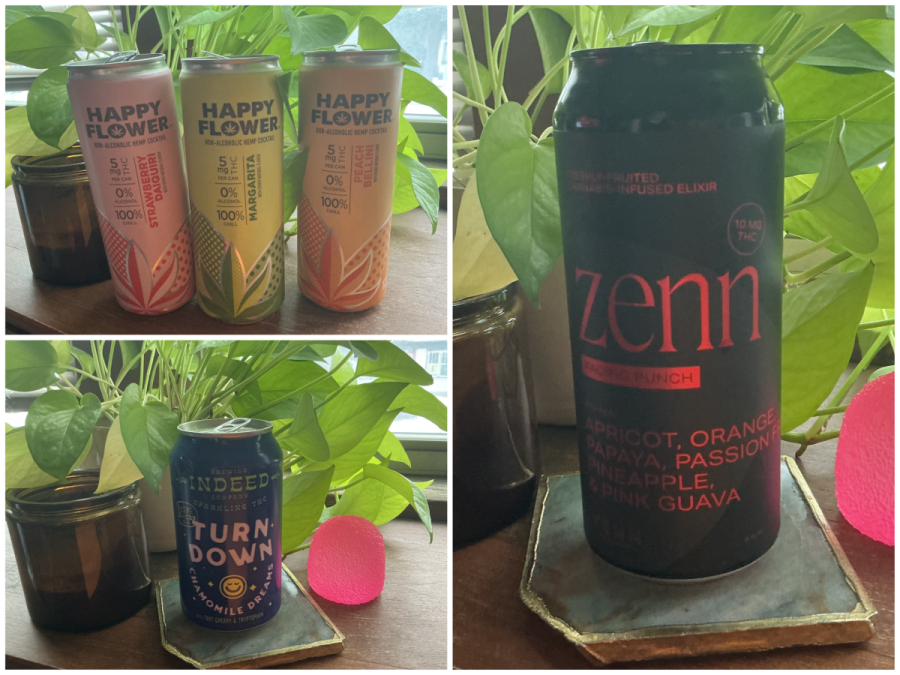We have to deal with a lot of B.S. in Minnesota when it comes to weather. Sometimes it feels like for every beautiful June sunset, there’s an April blizzard.
This summer, though, we have a new entrant in the pantheon of phenomena for Minnesotans to gripe about. The state has endured a record 23 air quality alerts this year, many of them stemming from wildfire smoke. On June 14, St. Paul earned the unenviable distinction of having the worst air quality in the U.S. David Brown, a spokesman with the Minnesota Pollution Control Agency, said that day’s air was the worst his agency has recorded since it started monitoring metro levels two decades ago.
The recurrent sight of skylines being obscured by thick, smoky air has many wondering: Is this the new normal? Are we going to live the rest of our lives checking the summertime Air Quality Index like we check the temperature? And what does this have to do with the defining crisis of our age, climate change?
We decided to talk to some smart people and find out. While there’s some cause for hope, the future looks about as bleak as our smog-choked metro did last month.
“We’re gonna have this type of smoke as a normal feature of the weather for several decades to come,” says Lee Frelich, a forest ecologist at the University of Minnesota. Especially, he adds, when we’re talking about big fires in places like remote Quebec, it will take a while for the frequency of the fires to taper off. “They’re not going to come under control until we reverse climate change or until they’ve just burned and burned until they come to a new equilibrium with the new climate,” he says.
And what is that new climate? Well, warmer, obviously.
“[Climate-wise], Minneapolis circa 2021 is the Mason City, Iowa, of 150 years ago,” Twin Cities meteorologist Sven Sundgaard once told Racket. “And if we really blow it, in terms of reducing CO2? Minneapolis will feel like Fayetteville, Arkansas, as soon as 2100.”
“Warmer means more evaporation from the trees,” Frelich says. More water evaporating from the trees means less water in the soil. Eventually, leaves and other foliage dry out too. And drier plants make it more likely that a lightning strike, campfire, or any number of other things will spiral into a massive blaze. Plus, Frelich says, climate change also extends the growing season, when fires are more likely.
“The period of time that is ripe for wildfire on the landscape is getting longer,” says Heidi Roop, a climate scientist who directs the U of M’s Climate Adaptation Partnership. “Changing patterns of precipitation are, in fact, changing and increasing the risk of wildfire.”
Though climate change is making them worse, big wildfires have been around for a long time.
“The smoke-free skies that we are used to, or we think are normal, are actually abnormal in the longer timescale,” says Lane Johnson, a scientist at the Cloquet Forestry Center and, before that, Wisconsin’s Apostle Islands National Lakeshore. “There are historical lightkeeper logs there that talk about the lightkeepers running the lighthouses night and day because of how thick the smoke was in the 1890s.”
Roop distinguishes between how a fire starts and how it spreads. The cause of a specific fire might be a lightning strike, an ATV, or a gender reveal party. But there are bigger issues at play that help fires spread. “The conditions that make wildfires hot and spread fast, and harder to control, are exacerbated by climate change,” she says.
Greenhouse gas emissions aren’t the only human activity that has made wildfires harder to control. Another culprit is land management practices. Frelich said that before European colonization, the Indigenous peoples who live in our region typically engaged in controlled burns, especially targeting medium-sized plants. This reduced the risks of fires spreading, as that type of vegetation can act as a bridge that allows small fires to spread to the big trees. Bonus: Burning those understory trees increases the amount of wild blueberries that grow, Frelich adds.
However, after many Indigenous people were forcibly removed from much of this region, European colonists adopted forest management practices that increased the risk of large fires, according to Frelich. “People suppressed fires because it was a cultural thing coming from Europe,” he says. Suppressing fires excessively means that, when fires do occur, it is easier for the flames to spread from small plants to tall trees.
Today, many Indigenous foresters are still inspired by traditional fire management practices. The Leech Lake Band of Ojibwe in Minnesota and the Fond du Lac Band of Lake Superior Chippewa in Wisconsin both employ foresters. The U of M announced earlier this year that it intends to return the Cloquet Forestry Center to the Fond du Lac Band, from whose ancestors the land was taken a century ago.
Alex Mehne, forest manager for the Fond du Lac Band, says conventional U.S. forestry has been influenced by some Indigenous practices. One key difference is that tribally managed forests tend to store more carbon, he says, which helps the climate. In part, this is because tribes tend to let trees grow older before cutting them down, thus providing more cover for wildlife and extra years of CO2 sequestration. The process of allotment, which saw the U.S. government distribute less desirable stolen land back to Indigenous groups, is a contributing historical factor. “You can bet that the profitable, fast-growth was sold,” Mehne says. “Land where trees tended to grow slower went back to the tribes.” Mehne says Indigenous folks use fire as a management tool to promote the growth of certain species like blueberries, and to reduce underbrush which makes hunting easier. While wildfire suppression is part of the band’s playbook, he explains, increasing the use of fuel-suppressing prescribed burns is their stated goal.
When wildfire smoke travels from the Canadian wilderness to populated areas here in Minnesota, it isn’t just a nuisance. It can be a real threat to people’s health. In fact, there’s some evidence that the fine particles in wildfire smoke can be as bad for your health as the similarly sized ones produced by power plants and cars.
This type of particle is called PM2.5, because they are 2.5 micrometers wide. They’re the main health concern when it comes to wildfire smoke, says Erika Mosesón, a lung and ICU doctor in Portland, Oregon, who hosts the podcast Air Health Our Health. These particles aren’t just created from wood and leaves, either. “Often, these wildfire events turn into catastrophic structural fires, so you’re burning homes, gas stations, cars,” she says. Having these tiny particles in your lungs is particularly dangerous for the same reason smoking weed gets you high faster than an edible: It’s easy to go from the lungs to the bloodstream, especially for things that are this small.
Breathing in these particles “leads to premature deliveries and premature labor in pregnant women, and then, we think, contributes to the development of lung disease in children and adults,” Mosesón says. “It contributes to development of cardiovascular disease, heart attack, strokes. In the older, more elderly population, you start to see cognitive changes.”
The risks are particularly stark for those of us with lung conditions. “Everybody is reporting and having rougher days for sure,” Samantha Koppa, a respiratory therapist at Abbott Northwestern Hospital in Minneapolis, says of her patients. “It definitely makes their lungs have to work harder, when their lungs are already working hard at baseline, just due to whichever condition they’re dealing with, whether it be COPD or pulmonary fibrosis or asthma.” For Koppa’s patients, the effects of wildfire smoke include shortness of breath and lower endurance. “They’re kind of like the canary in the coal mine,” she says.
So: We could be in store for many more years of smoky skies, and world leaders seem content to kick the climate can down the road. What can we do about it?
During smoky episodes, Mosesón says, it’s a good idea to use air purifiers with HEPA filters. But you should make sure it’s something that is actually mechanically pulling the particles out of the air, rather than using ionization or other unproven methods. In fact, you can build your own air filter using HEPA filters and a box fan—a machine called a Corsi-Rosenthal box. “The other thing is just decreasing the amount of particulates that you make in the indoor air environment,” she says. This means no smoking, and trying to reduce cooking, too.
“Time for peanut butter and jelly,” suggests Mosesón.
Jerry-rigging your own air filtration machine or cutting back on your stovetop steaks is just the start, though. There are collective changes we can—and must—make as a society, too.
“There’s a lot that you can do to filter buildings,” says Elizabeth Wrigley-Field, a sociologist at the U of M who studies inequality in mortality. “For buildings that really matter, where people spend huge amounts of their time, like a school or workplace, we should just do that. It should be an expectation that you can breathe clean air at work or at school.”
“Everything related to air pollution has a lot of inequity built into it,” Mosesón says. “Outdoor work in wildland fire events is obviously a big challenge, because a lot of times these are people who feel like they can’t take days off or don’t have access to sick days.”
This is on top of everyday air pollution, whose impacts along racial and socioeconomic lines are already incredibly unequal. Over the past couple years, environmental activists pushed back against a city of Minneapolis plan to install a public works facility at the Rooftop Depot site in the East Phillips neighborhood. They accused the civic leaders of “environmental racism,” and they won: The long fight over air quality in the historically polluted, majority BIPOC area culminated this spring with the city agreeing to sell the site back to the community for $3.7 million; the East Phillips Neighborhood Institute plans to transform the former Sears warehouse into an urban farm, housing, and community gathering space.
Ultimately, the fight against air pollution is a fight against climate change. And how dire is the fight? Believe your eyes as you struggle to ID the IDS Center this summer.
“The quality of the lives that we’ll have, and our children will have, and animals will have, that everybody will have, I think, depends really radically on choices that we make now,” Wrigley-Field says. “Not small choices, but big choices about how we’re going to organize life. And the status quo and going on with business as usual is not a health- or life-preserving option.”







